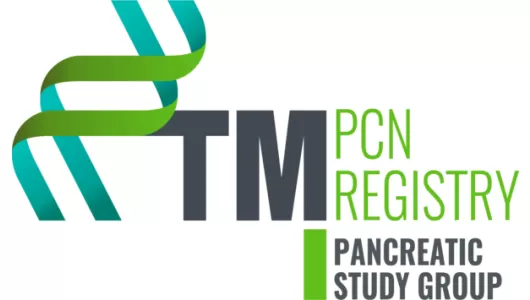
PCN Registry
Pancreatic cystic neoplasms (PCNs) are common and their incidence increases with age. It is estimated that they occur in a significant part of the population. PCNs may be benign or malignant based on their biological behavior. Their recognition and differentiation are challenging for clinicians. The proliferation and development of imaging studies has led to an increase in the number of (asymptomatic) pancreatic cysts discovered as an adjunct, but it also provides opportunities for the detection and treatment of precancerous lesions prior to malignant transformation, thereby reducing patient burden and costs.
In the case of pancreatic cystosis, treatment strategies include prevention of invasive carcinoma and early diagnosis of lesions. Intraductal papillary mucinous neoplasia (IPMN) and mucinous cystic neoplasia (MCN) are the most common precancerous states, as well as serous cystic neoplasm (SCN) with negligible malignancy and solid pseudopapillary tumors.
Our goal is to collect PCN-related data, including diagnostics, with a particular focus on endoscopic ultrasound (EUS) imaging, and detailed and comprehensive collection of treatment and follow-up information through the registry of the Hungarian Pancreatic Study Group.
All patients (symptomatic or asymptomatic) with PCN (diagnosed by imaging examinations: US, CT, MRI) who had EUS examination and/or FNA sampling (fine needle aspiration) can be included in the registry.
The EUS plays a major role in the diagnosis of pre-cancerous cystic pancreatic conditions. The EUS is excellent for detailed representation of formulas in the immediate vicinity of hollow organs and other organs, and is capable of detecting formulas less than 1 cm in size that are not shown on other imaging devices. EUH is the most sensitive and specific test method for detecting pancreatic tumors and detecting lymph node involvement.
Accurate differentiation and staging of pancreatic cystic neoplasm is essential for proper care. In this field, the EUS, in combination with FNA, has emerged as a primary modality based on the morphology of space occupancy in risk assessment and sampling through diagnosis. The increasing expansion of the study proves its usefulness, but it also requires deeper clinical experience.
The clinical appearance of PCNs offers extensive research potential based on compared information provided by the morphology (size, lobulation, echodensity, content, Wirsung duct communication), clinical picture and other imaging (US, CT, MRI) seen during EUS.
Contrast Harmonic Assay (CE-EUS) is complementary to EUS and plays an important role in distinguishing intravenous contrast-accumulating and non-accumulating areas, highlighting detail and differential diagnosis, as well as in analyzing cyst content of EUS-guided FNA sampling (cytology, CEA and amylase values) and further increasing diagnostic accuracy.
Diagnosis and management of pancreatic space-occupying lesions require a multidisciplinary approach that includes laboratory diagnostics, imaging, and diagnostic and interventional endoscopic procedures.
Registry data collection of pancreatic cystosis tumors contributes to improving the complex care of patients and to further expanding extensive clinical pancreatology research.
Uploading centres
Semmelweis Egyetem, I. Sz. Sebészeti Klinika